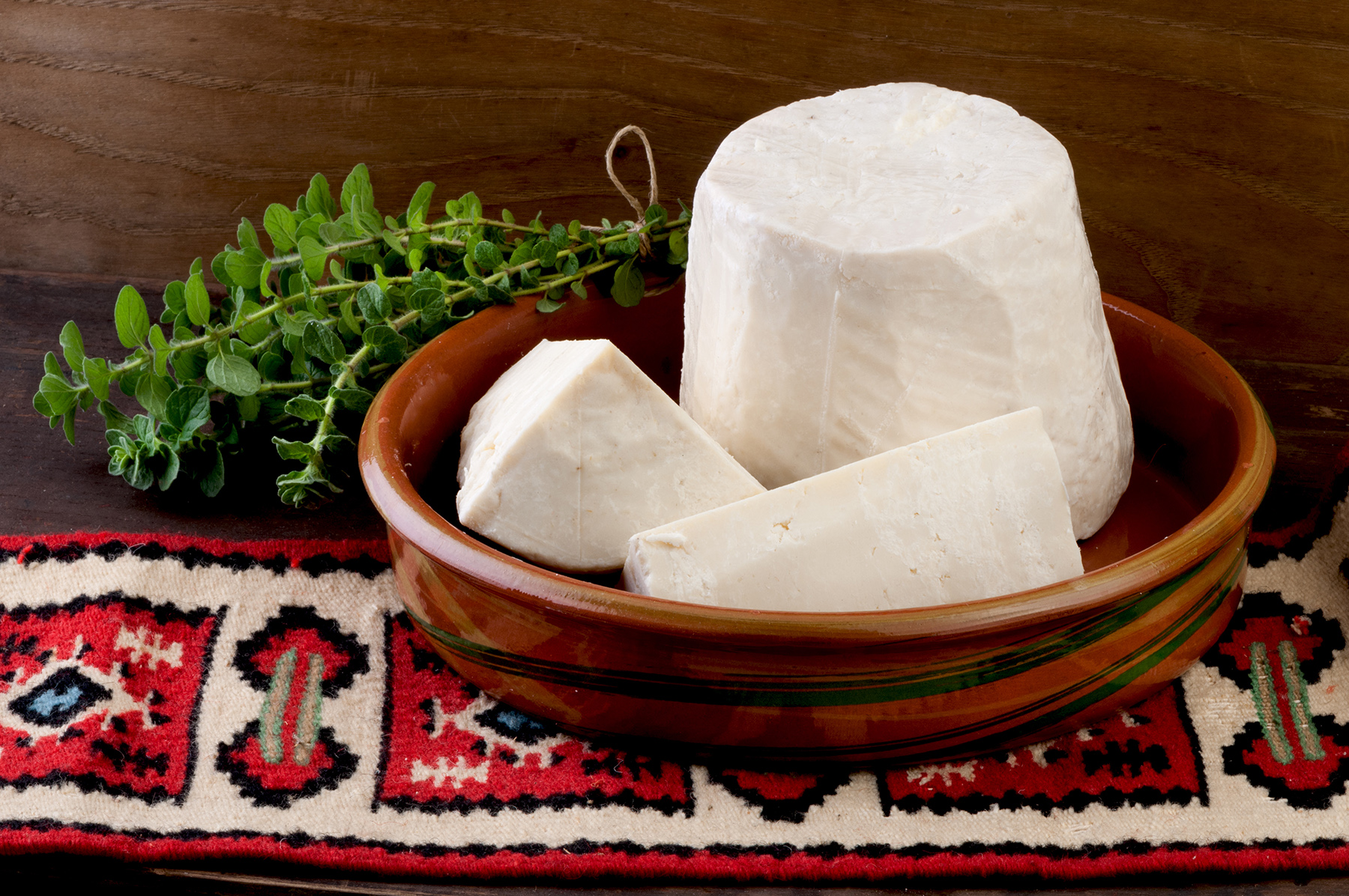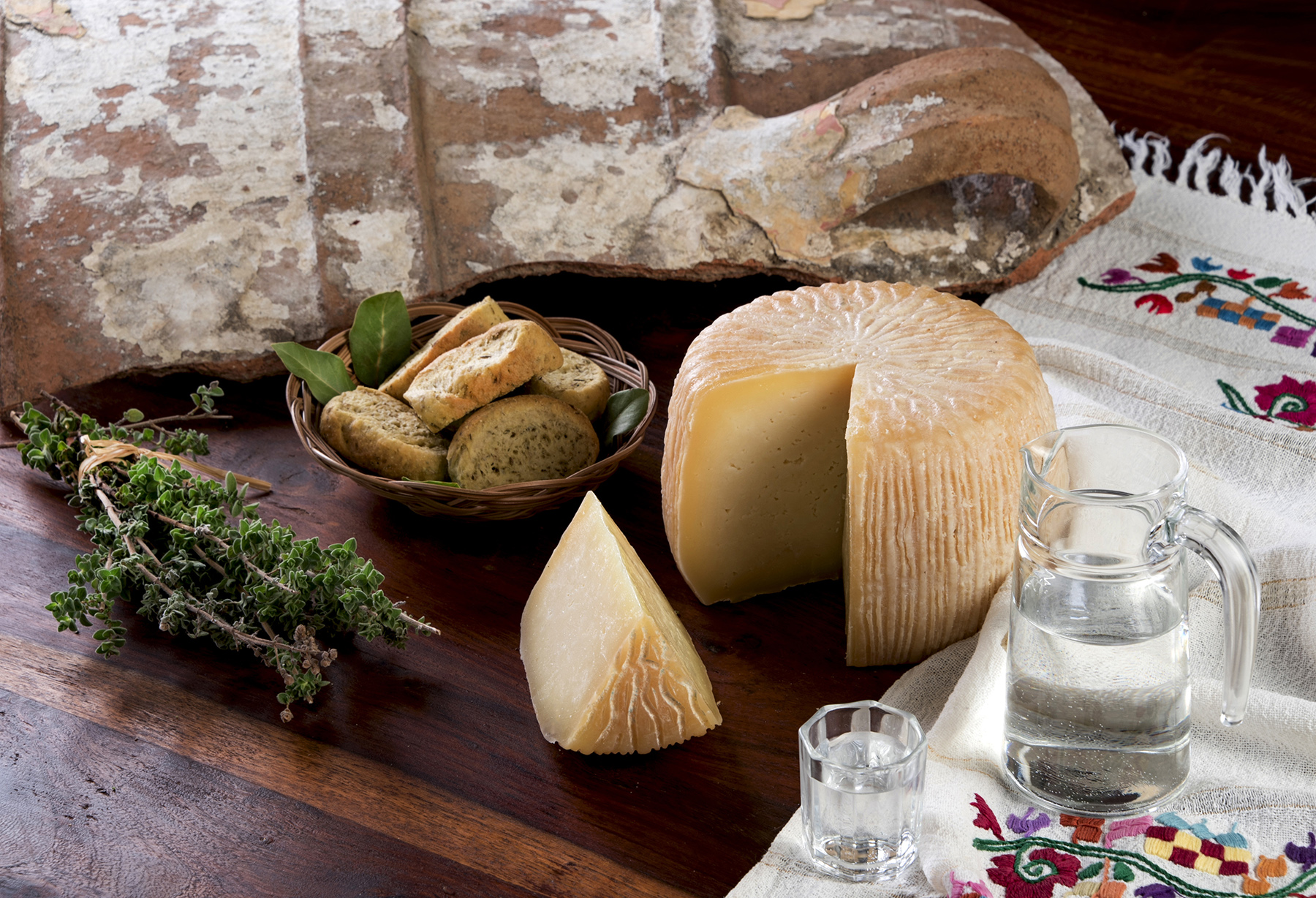Crete is an abundant land where shepherds still care for their flocks the way their ancestors used to since ancient times. The animals graze freely in the mountains, deliver the sweetest milk, which the farmers use for daily consume, to produce cheese and other dairy products, or sell it to small local factories that use it to produce cheeses of rare character.
Cretans consider cheese an essential food product in their diet. They consume it in moderate amounts daily, appreciating its nutritional value, but focusing more on the taste.
Every good cheesemaker knows that the flavor and character of cheese come from the milk. On Crete, the taste of the milk comes from the grass and shrubbery animals consume during free grazing on the rugged terrain. The Cretan cheeses are also unique because most of them are still prepared according to old-school traditions, which further enhance their character.
Graviera
Graviera, or Graviera Kritis, is the flagship cheese on Crete – a unique product usually made of sheep’s milk or a combination of goat’s and sheep’s milk. It is traditionally matured for up to six months, often in caves, or specially-controlled cold rooms for convenience in factories. It has a full aftertaste, sweet and nutty, and pairs well with red wines, although you can also pair it with a strong white.
Kefalotyri
Kefalotyri is a salty, hard cheese, made usually from a combination of goat and sheep’s milk, although it can sometimes be produced only with one of the two. It is one of the most consumed Cretan cheeses, in the top with Graviera and Mizithra.
Mizithra
Mizithra is creamy and reminiscent of ricotta, although its taste is rather distinctive. This cheese is made of goat’s milk. Matured Mizithra is hard, salty, and delicious.
Anthotyros

Anthotyros cheese
A cheese similar to Mizithra, known as Anthotyros, is produced the same way, from milk and whey from sheep or goats. Its hardened variant is popular when grated and spread over pasta.
Xynomizithra
Xynomizithra is the sour variant of Mizithra. It’s a typical Cretan product and a European protected designation of origin (PDO) cheese, very appreciated on the island due to its soft, creamy texture, that is easy to work into pies and other specialties. To produce it, a combination of whey and fresh milk are allowed to set at room temperature for about 24 hours, then processed.
Xinogalo
Xinogalo is a cream cheese made with salted, soured milk. It looks like very thick yogurt, but its taste is sour and salty, very distinctive. It can be used in pies, as a dip, or as a spread.
Staka
Staka is another traditional Cretan cheese with a soft consistency. The milk is warmed slowly until the protein and fat separate, then the fat is strained. This is later used like butter, while the remaining becomes the actual staka, which is used in pies, pilafi, omelets or other dishes. Staka can also be enjoyed raw, as a cheese spread.
Pichtogalo Chanion
Pichtogalo Chanion – as its name implies – is a cheese made in the Chania prefecture of Crete. It’s a creamy cheese made with unpasteurized goat’s or sheep’s milk. It has yogurt-like consistency, but the taste is sour. It is traditionally used in the bougatsa breakfast pastries in Chania.
Of course, there are many kinds of cheese you can enjoy on the island – like Malaka curd cheese and Tyrozouli, which is made of goat and sheep’s milk curdled with fig sap. Typically, Cretan shepherds and households prepare homemade cheeses, which are not available on the market – because many of these specialized products use unpasteurized milk and they cannot be sold to the general public. Graviera and Mizithra are produced by expert fromagers widely available at cheesemongers, supermarkets, and most tavernas.
Turophiles will love the cheeses of Crete.
